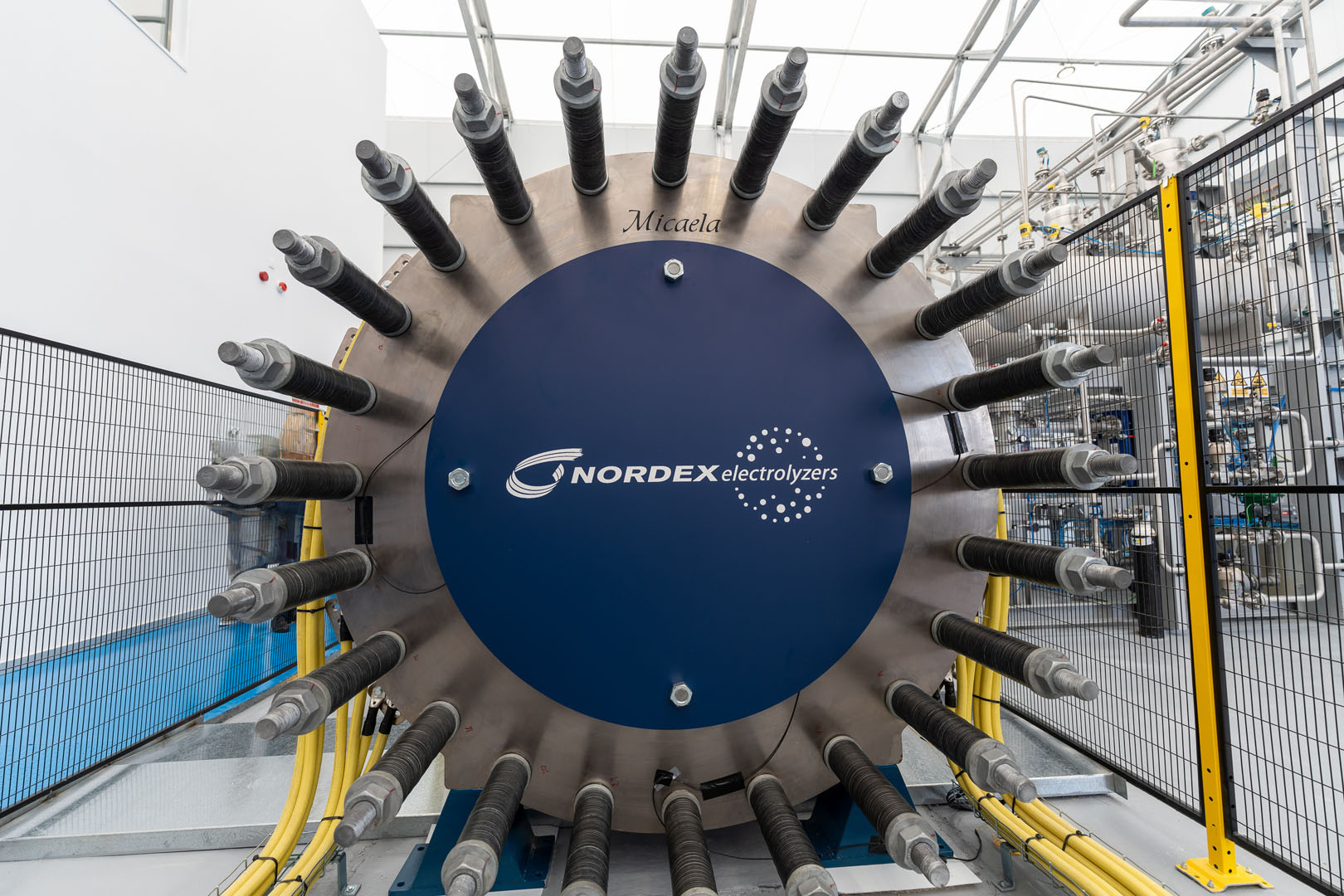Green Hydrogen

GREEN HYDROGEN:
THE POTENTIAL TO TRANSFORM THE WAY
WE POWER OUR WORLD
Hydrogen at a glance
THE FIGHT AGAINST CLIMATE CHANGE REQUIRES A SHIFT FROM FOSSIL FUELS TO RENEWABLE ENERGY SOURCES.
Hydrogen is expected to play a major role in the energy transition. As an energy vector, it can be used to produce other molecules, such as ammonia or e-fuels, thereby contributing to the decarbonization of hard-to-abate sectors, such as aviation and maritime transport, or fertilizer production.
The demand for hydrogen is projected to experience a remarkable surge of approximately 700 percent in the next three decades. To achieve the target of net zero by 2050, the majority of energy will need to come from clean sources.
CONTRIBUTION TO THE SUSTAINABLE DEVELOPMENT GOALS
At the heart of its Agenda 2030, the United Nations General Assembly adopted 17 global Sustainable Development Goals (SDGs) in 2015. The hydrogen economy has the potential to particularly contribute to the SDGs 13 (Climate Action), 7 (Affordable and Clean Energy), 8 (Decent Work and Economic Growth) and 9 (Industry, Innovation and Infrastructure).
Hydrogen Production
Hydrogen can be produced in a number of ways, all of which involve different levels of greenhouse gas and pollutant emissions, as well as energy and resource consumption. Although hydrogen itself is a colorless gas, colors are used to identify the different production routes and their resulting impact on the climate.
BROWN & GREY HYDROGEN
Most of the hydrogen produced today is derived from fossil fuels. Brown hydrogen is the result of a process called gasification, which is the extraction of hydrogen from coal. Grey hydrogen is produced from natural gas through a process called steam methane reforming. Both production methods emit large amounts of carbon monoxide (CO) and carbon dioxide (CO₂) into the atmosphere and therefore cannot make a positive contribution to the green transition.
BLUE HYDROGEN
Blue hydrogen is produced from fossil fuels, such as natural gas. However, unlike brown and grey hydrogen, the production process involves carbon capture and storage (CCS) technologies. The purpose of storing the CO₂ emitted during the production process underground is to reduce the amount of CO₂ released into the atmosphere. The greatest issue is that these technologies require a huge amount of additional energy to capture, transport, and store CO₂.
GREEN HYDROGEN
Green hydrogen is the only sustainable form of hydrogen, as it is solely produced using electricity from renewable energy sources, such as wind power. In a process called electrolysis, the main component, the electrolyzer splits water (H₂O) into hydrogen (H₂) and oxygen (O₂). No harmful greenhouse gases are emitted during the production of green hydrogen.

NORDEX ELECTROLYSERS FOR GREEN HYDROGEN PRODUCTION
Specifically designed to work under fluctuating conditions of renewable power generation.
Hydrogen Usage Areas
TRANSPORT & MOBILITY
The mobility sector must significantly reduce emissions. Hydrogen technologies can be a useful contribution to the mobility mix in a number of areas. Green hydrogen can be used in fuel cells to generate electricity that can then power electric motors in cars, buses, trains, and even airplanes and ships, thereby helping to decarbonize air, sea, rail, and heavy-duty transportation.
INDUSTRY
Used as a feedstock for producing chemicals like ammonia and methanol, or as a fuel for industrial processes, green hydrogen can be used in a variety of industrial applications that are hard to electrify, such as steel production, chemical manufacturing, and refining.
ENERGY STORAGE
When renewable energy sources like wind power are producing more energy than what is needed at a given moment, the excess energy can be used to produce green hydrogen. Compressed, and stored in ad hoc tanks, the hydrogen can be used later when energy demand is higher.
Alkaline Water Electrolysis
ALKALINE ELECTROLYSIS CELL
The Nordex alkaline electrolytic cell is made of two electrodes immersed in a liquid electrolyte and a porous diaphragm, which works as a separator between the cathode and the anode chambers. It allows ionic transport (OH-) while remaining impermeable to gas.
ALKALINE ELECTROLYSIS STACK
Several alkaline electrolysis cells grouped together in a serial arrangement constitute a stack – the main element of an electrolysis system. The anode of one cell is assembled with the cathode of the next cell, following a compact bipolar design.
ALKALINE ELECTROLYSIS BALANCE OF PLANT
The balance of plant includes all the subsystems that guarantee the optimal operation of the stack. These subsystems are the liquid-gas separation assembly, thermal management, deionised water production, power electronics, purification of the produced gas and other auxiliary equipment.
